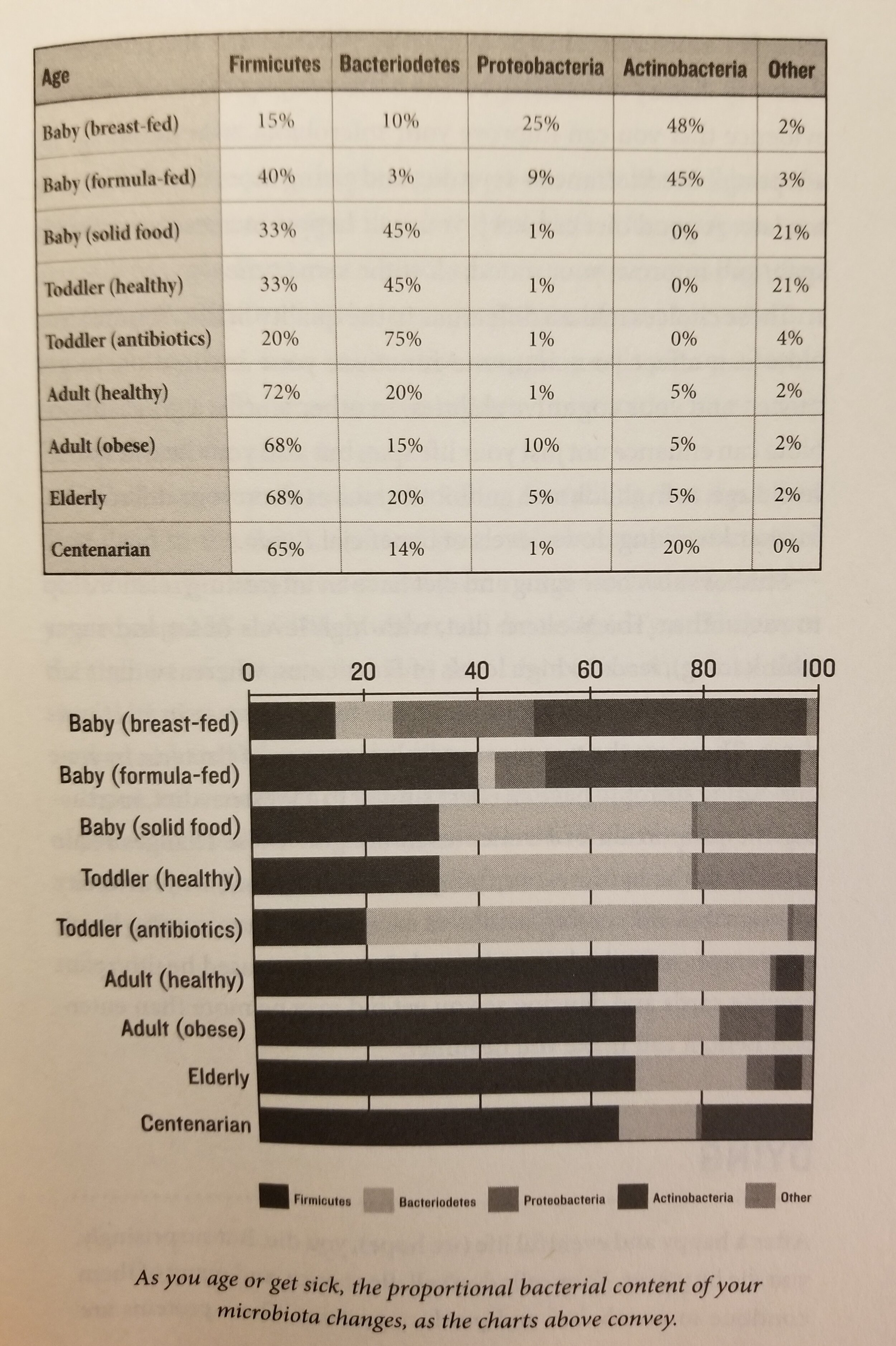Miscellaneous
Infantile colic is the medical diagnosis when babies cry for hours each day, usually between the ages of 3 weeks and 6 months. This produces severe strain on the family, and is a common cause of visits to pediatricians and family physicians in the first year of life. The general belief appears to be that the cause and treatment are unknown.
THE IMPORTANCE OF COLIC
An online search turns up some useful recent articles. In a 2015 review (1) of the literature, authors reiterate that the “cause” of infantile colic is not known, but that it is benign and “self-limiting” (goes away by itself) and that parents should be reassured.
However, the laboratory findings they report in the review article contradict that conclusion, and the most recent research is even more concerning. The immune system of babies with colic is impacted – babies are inflamed, all over their bodies, as demonstrated by blood tests (3). We know that excessive and prolonged inflammation is harmful, and a precursor of most chronic illnesses from allergies, to autoimmunity, cardiovascular disease, mental illness, learning difficulties, arthritis, some cancers, and eventually neurodegenerative diseases like Alzheimer’s and Parkinson’s disease. In fact, some research have tied colic to the later development of migraines (5). We need to figure out what can be done about colic, and then do it.
WHAT CAUSES COLIC?
Based on a 2017 article, it appears now well understood that most cases of infantile colic involve “dysbiosis”, or problems with the baby’s gut bacteria (2). Accordingly, many babies respond to treatment with probiotics, and a frequent laboratory anomaly, an elevated fecal calprotectin, improves along with the baby’s behavior (3). In that study, normal babies had a calprotectin level of 100, while colicky babies were up to 900, and came down to at least 600 as their symptoms improved in response to probiotics.
The calprotectin is a component of white blood cells, the body’s immune cells charged with fighting problem situations. In the functional medicine understanding, calprotectin is likely to increase if something causes the gut to feel “under threat.” This can include infections, unsuitable food, excessive stress, parasites, toxins from present or past mold, and other toxins such as heavy metals and pollution.
To take a step back, it is important to realize that our gastrointestinal tracts are in effect “outside the body”. That is, there is continuous “tube” that starts at the mouth and ends at the anus, and this tube is completely exposed to the environment, the way a donut hole would be for a donut. The body has taken advantage of this to park a majority of the immune system along the intestine, so that the environment can be sampled and processed continuously, and the cells of the immune system can transmit the information to the rest of the body.
The intestine is also tasked with being the organ that absorbs nourishment from food, which is in a sense the opposite from protecting the body from harmful environmental impacts. This makes our intestine a likely location for problems to arise. Hippocrates evidently said “all disease starts in the gut.”
INFLAMED BABIES
When the body is exposed to infections, or toxins, or harmful foods, the immune system sounds the alarm; the individual may experience abdominal cramping and perhaps flu-like symptoms – fatigue, headache, feeling poorly, and feeling grumpy. It’s interesting that infantile colic occurs in the evening, which happens to be a time when the body’s major anti-inflammatory hormone, cortisol, begins to drop off towards nighttime low levels (but that is a guess on my part).
All babies of course are exposed to many environmental impacts, especially from germs and other allergens, and must learn to “tolerate” the vast majority of these influences (since only a very small fraction of germs are dangerous). The “education” of the immune system occurs thanks to “beneficial bacteria” the baby acquires during the first few moments of life, as he or she (hopefully) comes down the birth canal. One of the most abundant and clinically important vaginal bacteria are called Lactobacillus reuteri, and that is one probiotic that works well to improve or resolve infantile colic (2).
HOW SHOULD WE TREAT COLIC?
If we understand this sequence, we can derive many of the likely treatments and prevention for colic. A healthy vaginal biome is the first step – it also plays a role in preventing premature labor and delivery, and chorioamnionitis, a placental inflammation that raises the risk for pregnancy complications and autism spectrum disorder. A healthy vaginal biome prevents bacterial vaginosis and yeast vaginitis. It is depleted by douching, antibiotics, stress, and altered by oral contraceptives in ways not entirely understood (4).
Next, the baby has to be exposed to this biome. The relevant bacteria are not acquired as efficiently in babies delivered by C-sections. L. reuteri can be taken by mouth, in quantities that successfully repopulate the vaginal tract for mothers, and it can be given to babies.
When colicky babies are given L. reuteri, at least 65% of breastfed babies respond with reduced crying and reduced calprotectin (3). The calprotectin level decreases more in the babies that do respond, confirming that there is a group of babies whose calprotectin is high basically because they are low on the L. reuteri.
CHANGING THE DIET
Another treatment that apparently has acquired conventional medicine support is dietary restriction. For exclusively breastfed babies, this means that mom must restrict her food intake. Many foods have been found to be at fault, and in the conventional medical world, where increased gut permeability is not a well-understood phenomenon, there is no attention to restoring mom’s proper gut function.
The treatment of increased gut permeability is poorly defined by research. In the alternative and functional realm, a number of interventions are thought to be helpful in healing a leaky gut. These are summarized as the “5R” protocol, which consists of removing, restoring, repairing, reinoculating, and rebalancing. Basically you need to remove irritants, restore proper digestive juices, repair the barrier with nutrients, reinoculate with probiotics, and rebalance patient’s (usually) overstressed lives.
To take another step back, leaky gut has been a contentious issue between allopathic or conventional medicine on the one side, and naturopathic and unconventional practitioners on the other. However, in this case, one side clearly won, as the junction between intestinal cells was found, on close inspection, to be made up of pores and portals. The body intends for the gut to be permeable at times, most likely to allow gut immune cells to flood into the bloodstream when needed, and relay messages throughout the body. Unfortunately, there is a food that causes leaky gut, at least temporarily in all creatures, and that is the protein gliadin, the main peptide in gluten, which is found in wheat and other grains.
LEAKY GUT
So, to return to the thread of this argument, if a mother has an overreaction to gluten, or another reason for excessive IP, then poorly digested proteins from the foods she eats commonly will find their way into her bloodstream. These proteins will elicit an immune response, because the immune system does not “like” to see poorly digested proteins – it assumes they are dangerous without investigating. These poorly digested proteins presumably make their way into breast milk and are passed down to the baby, who is overreacting due to dysbiosis or toxins.
The baby then becomes inflamed. About 10-40% of babies suffern from colic, depending which source you read. This represents a massive failure on our part to foster the optimal development of the most vulnerable among us.
VITAMIN D STATUS
Low vitamin D levels during pregnancy can contribute to childhood obesity
A study that followed 532 mother-child pairs from early pregnancy through age six found an inverse correlation between maternal vitamin D levels and child obesity. One-third of the women in the study had very low 25(OH)-vitamin D concentrations as measured in the first half of pregnancy. Measurements of obesity markers obtained at age four showed significantly increased body mass index and waist circumference in the children of very low vitamin D mothers. This outcome was slightly increased at age six, at which time body fat percentage was measured and also found to be higher among the children in this group. A proposed mechanism follows studies showing that vitamin D can inhibit the conversion of pre-adipocytes into mature fat cells, suggesting that children exposed to very low vitamin D in early gestation might develop a higher adipose cell count. This study highlights the importance of monitoring vitamin D levels, especially during pregnancy. Contributed by Sheena Smith, MS
Infants born to vitamin D-deficient mothers might be at risk for neonatal brain injury
A review article published in Neonatology explores the neuroprotective role of vitamin D in the brain development of neonatal and pediatric populations. The authors call attention to several preclinical trials that show infants born to vitamin D-deficient mothers are at a high risk of developing neonatal brain injury. Specifically, the authors identify clinical studies that show neonates with hypoxic-ischemic encephalopathy (HIE) tend to be vitamin D-deficient. Although there is some clinical evidence to support use of vitamin D supplementation to reduce size and severity of brain infarcts, such studies have been performed on animal models or adult humans. To date, there is limited data available on whether additional prenatal or postnatal vitamin D supplementation might influence the prevalence or severity of neonatal HIE. This article raises awareness of the need for further investigation in this area. Contributed by Mario Roxas, ND
Stessman L, Peeples E. Vitamin D and its role in neonatal hypoxic-ischemic brain injury. Neonatology 2018;113(4):305-312.
CESAREAN DELIVERY
it’s faster, more lucrative, and more easily scheduled. In 2013 payment for cesarean delivery is about 50% higher than average payments with vaginal births ($27,866 versus $18,329). It’s no wonder rates of cesarean births increased in the US by 50% between 1996 and 2001.
infants born by cesarean delivery have an increased risk of developing asthma, allergies, and autoimmune disease in later childhood. Compared with babies delivered vaginally, those delivered by cesarean were 26% more likely to be overweight and 22% more likely to be obese.
BREASTFEEDING, GMOs, and LOW FIBER DIETS
breastfeeding has been associated with a host of positive health outcomes ranging from fewer ear infections to lower risk of leukemia.
Researchers in Sweden discovered that a substance found in human breast milk called HAMLET (human alpha-lactalbumin made lethal to tumor cells) has elective ability to kill cancer cells
Breast milk is rich in living white blood cells, immunoglobulins, and oligosaccharides that feed a particular strain of beneficial bacteria from the genus Bifidobacterium.
The preferred foods to first feed a baby are liver, egg yolks, avocado, and pureed greens
In 2014 the average daily dietary fiber intake was 16 grams per day, despite the recommended 38 grams. In 2009 the USDA’s Economic Research Service found that in American adults a mere 3% of calories a day came from fruits and 5% of calories from vegetables (the majority of which were potatoes). This is a very far cry from the fiber-rich and plant-centered diets humans ate up until the Industrial Revolution in the late 1800s.
if a child is exposed to gluten within the first 5 months of life the probability of celiac goes up 500%, if exposed working the first 7 months it's 178%... Baby gets whatever mom eats
RANDOM ADVICE
The best way to set up young children to be strong is to lay them face down when they're a baby. They will have to do what equates to a push up to investigate what is going on around then which will improve the neck extensors strength... https://youtu.be/tFJy73EtFus
You achieve 90% of your coordination by age 12. Children should be exposed to as much variety in sports and their environment as possible. Before age 12 it is a priority that kids have fun in whatever sport or endeavor they enter
Children develope technical skills at the rate with which they develope strength
To convey important information in a way that will get through to your children, recruit someone they respect. Eg the football coach... Because most of the time they will not listen to you because you're their parent
Exposure to RF-EMFs and ELF-EMFs during pregnancy, infancy, and childhood is particularly concerning since the rate of cell growth and maturation is highest during these developmental stages. Growing cells are much more sensitive to environmental toxins such as EMFs, compared to established cells. Research has indicated that EMF exposure to growing cells could not only affect an individual cell’s ability to grow and reproduce naturally, but also lead to functional complications. A healthy cell is the foundation for healthy organ function and therefore, when cells are not able to mature properly, the organ’s ability to function optimally is also compromised, leading to poor health outcomes.
INOSITOL IMPROVES PREGNANCY RATES
According to a recent review published this month in Medicine, researchers demonstrated that myo-inositol supplementation can increase pregnancy rate by increasing oocyte and embryo quality during an in vitro fertilization (IVF) program.
Inositol acts as second messenger which regulates several hormones such as follicle stimulating hormone (FSH), thyroid stimulating hormone, and insulin.
Previous studies have shown that an inositol deficiency is common in individuals with insulin resistance and PCOS. There appears to be a reduced ability to process, metabolize, and effectively use inositol from foods, which is a distinctive characteristic feature of insulin resistance. As a result, the nutritional requirements of these patients may not be met by a simple change in the diet, and inositol should be considered a conditionally essential nutrient in these women.
Although inositol is an insulin sensitizing agent commonly used for those with PCOS and insulin resistance, it also has some roles in reestablishing menstrual regularity and ovulation.
This review consisted of 7 studies including 935 women. The average dose of myo-inositol was 4 grams/day over a 3 month period before and during controlled ovulation induction. Myo-inositol supplementation was associated with a significantly improved pregnancy rate in infertile women undergoing an IVF program.
Since inositol plays a role in the regulation of FSH, it is critical for FSH signaling, oocyte maturation, and embryo development. Oocyte and embryo quality are considered to be the main challenge of IVF in assisted reproduction. Inositol is safe, inexpensive, and can have a therapeutic approach for women with fertility issues.
It is important to note that the conversion of myo-inositol to D-chiro-inositol is impaired in individuals with PCOS and insulin resistance, so supplementation in these individuals should take the form of both D-chiro-inositol and myo-inositol.
Also, one must keep in mind that exposure to endocrine-disrupting chemicals (EDCs) including bisphenol A (BPA), phthalates, PCBs, PBBs, PBDEs, pesticides, and heavy metals may also contribute to infertility. It is important to minimize further exposure by eating organic produce, drinking filtered water, using household products that are fragrance-free and free of phthalates and BPA, and replacing non-stick pans with glass, ceramic, or cast iron. Nutrients that support detoxification pathways include n-acetyl-cysteine, glutathione, calcium D-glucarate, milk thistle, and sulforaphane.
By Michael Jurgelewicz, DC, DACBN, DCBCN, CNS
Source: Zheng X, Lin D, Zhang Y, et al. Inositol supplement improves clinical pregnancy rate in infertile women undergoing ovulation induction for ICSI or IVF-ET. Medicine, 2017 Dec;96(49):e8842. doi: 10.1097/MD.0000000000008842.
A SYSTEMATIC APPROACH FOR BREASTFED BABIES
I propose that the correct treatment of infantile colic is this:
Start the baby and mom on L. reuteri. Mom could start on women’s probiotics, such as Metagenic’s Women’s Probiotic, or even Jarrow’s (though the Jarrow version has lower numbers of bacteria). For the baby, the preparation used in the research studies (6) contained 100 million units daily of L. reuteri. I have not investigated brands for this yet, but it appears widely available.
Start mom on an elimination diet, hopefully as part of an investigation for leaky gut. Ideally one would figure out the 5Rs. What needs to be eliminated (foods, harmful organisms)? What does mom need for efficient digestion, for efficient gut membrane repair, for an improved gut biome? How can we provide her with the support and guidance she wants to improve the stress level in her life?
If the baby’s symptoms do not resolve, investigate the baby and mom for toxins, heavy metals, mold, and chronic infections.
References…
Am Fam Physician. 2015 Oct 1;92(7):577-582. Infantile Colic: Recognition and Treatment Johnsno, JD, Cocker K, Chang E
Pediatrics. 2015;135(suppl 1):S5–S6. In: Abstracts from the 6th Excellence in Pediatrics Annual Conference, December 4–6, 2014, Dubai, United Arab Emirates. Fecal calprotectin during treatment of severe infantile colic with Lactobacillus reuteri DSM 17938. Savino F, De Marco A, Ceratto S, et al.
J Pediatr Gastroenterol Nutr. 2017 May;64(5):691-695. Infantile Colic Is Associated With Low-grade Systemic Inflammation. Pärtty A1, Kalliomäki M, Salminen S, Isolauri E.
AIDS. 2013 Aug 24;27(13):2141-53. Hormonal contraception decreases bacterial vaginosis but oral contraception may increase candidiasis: implications for HIV transmission. van de Wijgert JH1, Verwijs MC, Turner AN, Morrison CS.
Iran J Child Neurol. 2017 Summer;11(3):37-41. Is Infantile Colic an Early Life Expression of Childhood Migraine? Tabrizi M1, Badeli H1, Hassanzadeh Rad A1, Aminzadeh V1, Shokuhifard A1.
Pediatrics. 2010;126:e526-e533. Lactobacillus reuteri DSM 17938 in infantile colic: a randomized, double-blind, placebo-controlled trial. Savino F, Cordisco L, Tarasco V, et al.

















































